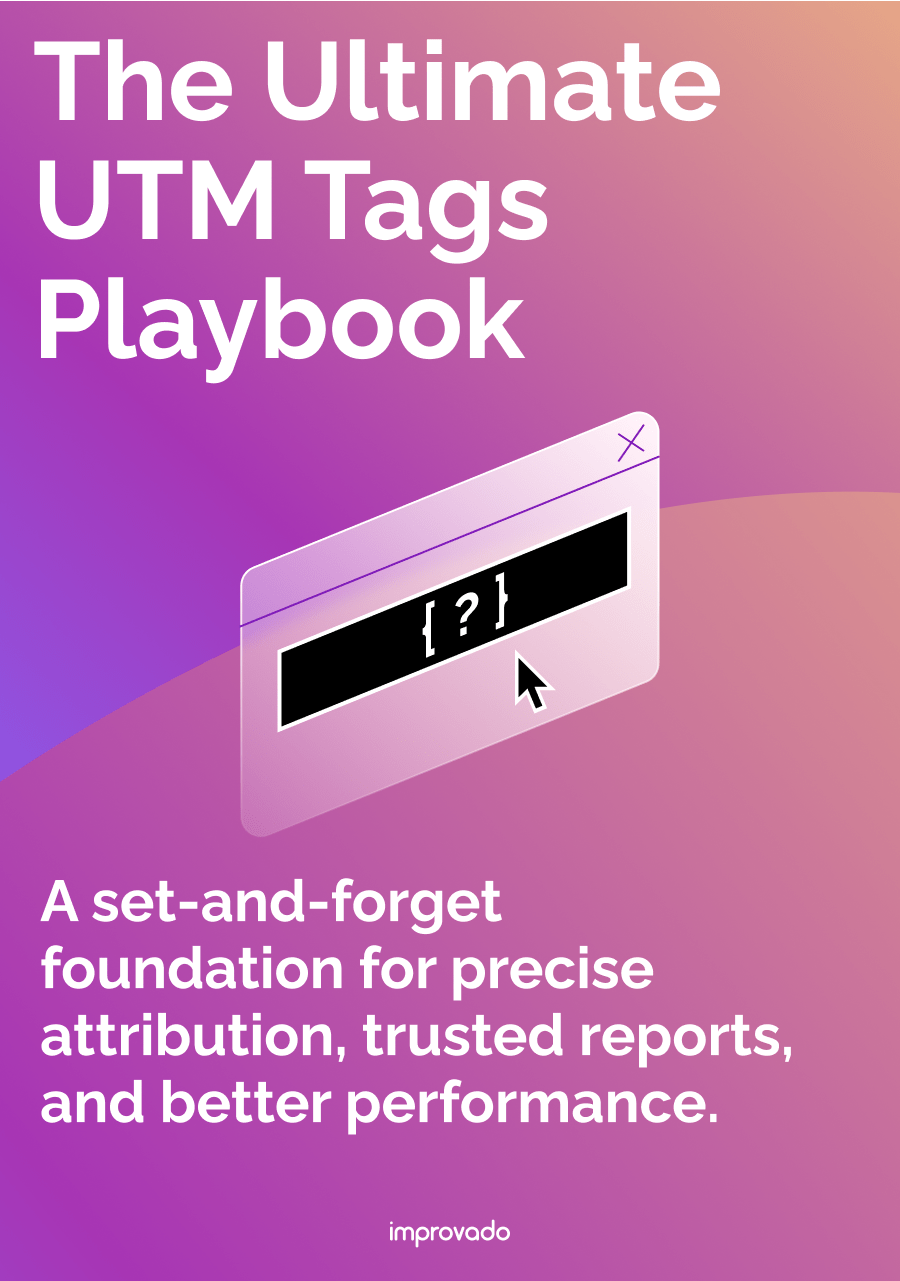If you work in demgen, your team faces immense pressure to grow revenue. The CEO wants more leads, but your budget and headcount remain flat. Traditional lead generation tactics like cold calling and broad email blasts are hitting a point of diminishing returns. They are slow, resource-intensive, and struggle to scale effectively. This is where AI lead generation changes the game.
Artificial intelligence offers a faster, smarter path to growth. It automates repetitive tasks and analyzes vast datasets to find high-intent buyers. AI empowers your team to make better decisions and focus on what they do best: building relationships and closing deals.
This guide provides a comprehensive roadmap. We'll explore proven strategies, essential tools, and practical steps to implement AI in your lead generation process successfully.
Key Takeaways:
- AI lead generation uses machine learning and data analysis to automate and optimize the process of finding, qualifying, and engaging potential customers.
- Key benefits include higher lead quality, faster response times (speed-to-lead), improved efficiency, and lower cost per acquisition.
- Core AI strategies involve predictive lead scoring, intent data activation, conversational AI chatbots, and personalized outreach at scale.
- Successful implementation requires a clear roadmap, the right tools, clean data, and a focus on integrating AI with human expertise, not replacing it.
What Is AI Lead Generation? And Why It Matters Now
AI lead generation is the use of artificial intelligence technologies to automate and enhance the entire lead lifecycle. It's not just about finding more names for a list. It’s about finding the right names, understanding their needs, and engaging them at the perfect moment.
This intelligent approach moves teams from reactive to proactive marketing and sales.
Defining AI-Powered Lead Generation
At its core, AI for lead generation leverages machine learning (ML), natural language processing (NLP), and predictive analytics. These technologies sift through enormous amounts of data. This includes behavioral data, firmographic details, and intent signals from across the web.
The goal is to identify prospects who are most likely to become customers. AI can be applied at every stage, from initial contact with an intelligent chatbot to prioritizing accounts for your sales team with a predictive scoring model.
Traditional vs. AI-Driven Lead Generation: A Head-to-Head Comparison
The difference between traditional and AI-driven methods is stark.
Traditional methods rely on manual effort and intuition. AI relies on data and automation. While a hybrid approach is often best, understanding the core differences highlights the massive potential of AI. It allows for a more scientific and scalable approach to building your sales pipeline.
The transition to AI is not about eliminating sales and marketing professionals. It's about augmenting their abilities.
AI handles the repetitive, data-heavy tasks that humans find tedious and are less efficient at. This includes sifting through thousands of potential leads, enriching contact data, or sending initial follow-up emails. This frees up your team to focus on strategic thinking, creative problem-solving, and building genuine human connections with the most qualified prospects.
The Core Benefits of Integrating AI into Your Lead Generation Strategy
Adopting AI is a competitive advantage. By automating key processes and applying machine learning to large datasets, AI fundamentally changes how organizations identify, engage, and convert leads. The benefits impact everything from conversion rates to team morale.
1. One of the most significant advantages is higher lead quality and conversion rates
This is primarily achieved through personalization and enhanced lead scoring.
Instead of generic outreach, AI systems tailor messages, timing, and channels based on individual user signals. This relevance drives higher engagement and better customer experiences from the first touch.
2. AI lead generation technologies offer always-on nurturing and unmatched responsiveness, which is crucial for converting leads
Speed-to-lead is a known success factor.
Replying to an inquiry within minutes greatly increases the chance of conversion. AI tools like chatbots and automated email responders enable 24/7 engagement. This rapid response keeps prospects from going cold.
Additionally, AI-driven systems ensure no lead falls through the cracks. Every inquiry or interaction is logged and addressed in real-time, something difficult to achieve with manual methods.
3. Efficiency is another core benefit
From AI chatbots that pre-qualify leads in real-time to predictive scoring models that prioritize sales follow-up, AI minimizes wasted effort and shortens sales cycles.
Automating routine and labor-intensive tasks, AI can also dramatically lower the cost per lead.
This allows teams to scale outreach without scaling headcount, freeing up human resources for higher-impact strategy and relationship-building.
An often overlooked benefit of AI is the clarity it brings through analytics.
AI doesn’t just generate leads, it also tracks and analyzes what happens with those leads in great detail. AI can spot patterns in conversion data or lead behavior, guiding marketing leaders on where to double down or what to adjust.
Top AI Lead Generation Strategies for Modern Teams
Each sector might emphasize different AI technologies or tactics, but the underlying strategies share common themes: using data and automation to find and engage the right prospects.
Below is an overview of how key AI technologies are applied in lead generation.
1. Automated lead scoring
AI-powered scoring models analyze historical CRM data, behavioral signals, firmographics, and intent indicators to identify patterns that indicate a lead’s likelihood to convert. Unlike static rule-based scoring, machine learning adjusts weights dynamically as new patterns emerge.
This allows sales and marketing teams to prioritize high-fit opportunities and allocate resources more effectively. Predictive scoring also supports segmentation strategies, retargeting efforts, and budget alignment by clearly identifying top-performing cohorts.
Similarly, companies can use this technology to analyze and pinpoint which customers might be in the market for a new product, thus generating leads for cross-selling or upselling.
2. Intent data activation
AI systems can detect early signs of purchase intent by analyzing signals such as keyword searches, website visits, content engagement, or third-party behavior data. This allows marketers to engage leads before they’ve formally expressed interest.
By activating campaigns based on these signals, rather than waiting for form submissions, teams can shorten sales cycles and engage prospects with highly relevant, timely outreach.
3. AI-powered virtual assistants and chatbots for engagement
Conversational AI tools can pre-qualify leads, ask relevant questions, collect contact details, and even schedule demos.
For example, an e-commerce retailer’s chatbot might ask site visitors if they need help, recommend products, or offer a discount code in exchange for an email signup, effectively turning anonymous visitors into leads.
In B2B scenarios, a chatbot on a software company’s site can qualify a visitor by asking about their company size and needs, then route hot leads to a human sales agent.
Unlike static forms, AI chatbots adapt based on user responses and past behaviors.
4. Automated lead data enrichment
AI tools can integrate with external data providers and internal systems to enrich lead profiles instantly. They fill in missing fields, validate email addresses, append firmographics, and flag invalid or duplicate entries.
This automation improves lead routing, supports better targeting, and enhances the accuracy of downstream analytics. It also removes the need for manual research or outsourced list cleaning.
5. Intelligent workflows and routing
AI can orchestrate workflows based on lead behavior, score, and stage in the buyer journey.
For example, a high-intent lead from a target account might be sent directly to an enterprise AE, while a lower-intent lead enters a nurture sequence.
These automated decisions increase speed-to-lead, improve conversion rates, and align lead handling with business priorities without overburdening marketing operations teams.
6. AI-powered outreach
Lastly, companies have started to use machine learning, natural language processing, and other AI technologies to automate and personalize communications at scale.
Instead of relying on static templates or manual sequences, these systems tailor emails and messages to individual leads based on their behavior, firmographics, and historical engagement data.
AI tools can optimize subject lines, predict send times for maximum open rates, and adjust content in real-time based on how a prospect interacts with previous messages. This creates more relevant outreach without increasing the manual workload.
Some platforms like Editpad use generative AI to draft emails or LinkedIn messages that mirror a brand’s tone and past performance.
However, implementing generative AI for outreach still requires human-in-the-loop to ensure messaging aligns with brand standards, context, and compliance.
A Deep Dive into AI Lead Generation Tools & Technologies
The market for AI lead generation tools is vast and growing rapidly. Understanding the different categories can help you build the right technology stack for your needs. It's not about finding one "magic" tool, but about combining different solutions to create a powerful, automated system.
Categorizing AI Lead Gen Tools: A Framework
Different tools serve different purposes within the lead generation funnel. Some are great for top-of-funnel prospecting, while others excel at mid-funnel qualification or engagement. The table below breaks down the main categories to help you understand the landscape.
Tools for AI-Powered Content Creation and SEO
A crucial part of lead generation is attracting inbound interest. AI is revolutionizing this area as well.
Tools can help you research keywords, brainstorm topic ideas based on your target audience, and even generate detailed content briefs for writers.
Other platforms can analyze existing content and suggest optimizations for SEO, readability, and tone of voice. This helps you create high-quality content that attracts organic traffic and converts visitors into leads.
Choosing the Right Tech Stack
When selecting AI tools, focus on integration. The true power of AI is unleashed when your tools can talk to each other. Your prospecting platform should feed data into your CRM, which should be analyzed by your predictive scoring model, which in turn informs your sales engagement platform. A seamless data flow is essential. Start with one or two key areas you want to improve, and build your stack from there.
Implementing AI in Your Lead Generation Process
Integrating AI into your lead generation workflow isn’t just a plug-and-play effort. It requires a clear strategy aligned with data readiness, business goals, and operational structure.
The following pillars help ensure a successful implementation.
1. Roadmap and infrastructure
Before introducing AI, evaluate your current lead generation process to understand where automation and intelligence can drive the most value. For example:
- We need to respond to web inquiries faster,
- We want better quality filtering of leads,
- We have poor lead-to-opportunity conversion,
- Or we have lots of data we aren’t leveraging.
These gaps often indicate where AI can streamline workflows.
Start with high-impact use cases that offer measurable results. Lead scoring, automated outreach, chatbots for qualification, or dynamic content generation are often the easiest to pilot with a clear ROI.
Prioritizing a narrow scope allows you to validate value, uncover gaps, and build internal support before expanding AI usage further into the funnel.
But this will work only if the foundation is sound.
Assess your data infrastructure.
AI models depend on structured, timely, and reliable data to perform well. Incomplete CRM fields, inconsistent UTM tagging, or fragmented platforms lead to inaccurate predictions, flawed scoring, or irrelevant personalization. Without quality inputs, even the best AI model will produce low-impact results.
2. Right tools and integrations
With objectives and data in hand, evaluate AI lead generation solutions that fit your needs and budget.
There is a spectrum of options:
- Built-in AI features of your existing software – many CRM and marketing automation platforms have AI capabilities you can turn on,
- Standalone AI products like chatbot platforms, AI-driven lead scoring tools, predictive analytics services,
- Even custom-built AI models if you have a data science team and engineering capabilities.
Select platforms that align with your tech stack, data maturity, and internal expertise:
- Consider integration, like will it plug into your CRM/MAP easily?
- Ease of use and can your team operate it or will it require specialized skills?
- Calculate the cost, factor in the total cost of ownership, not just licenses, but setup and maintenance.
Marketing leadership should involve the IT department or an experienced solutions architect at this stage to ensure the chosen AI tool aligns with the company’s tech stack and security requirements.
3. Pilot and implementation
Make any changes gradually.
If you’re deploying an AI chatbot, launch it internally or on a small segment of site traffic to observe how it performs.
If it’s predictive lead scoring, run it in parallel with your current scoring for a while and compare results before making it the primary system.
Gradual integration helps avoid major disruptions.
Keep human oversight in place. AI can streamline and enhance lead generation, but judgment, creativity, and relationship-building remain distinctly human strengths. Use AI as a force multiplier, not a replacement.
4. Process optimization
Team training is a big part of AI integration: explain any changes in the process and try to alleviate any fear.
For example, if your BDRs will now see AI-generated lead scores, train them on what the scores mean and how to use them, perhaps a high score means immediate phone call.
If a chatbot is handling initial conversations, ensure your human team knows how to seamlessly take over when a lead is handed off.
Additionally, continuously monitors the AI’s performance metrics and gathers team feedback. Lead behaviors evolve, market dynamics shift, and models need fine-tuning. Establish feedback loops for continuous performance monitoring and optimization.
Measuring Success: Key Metrics for AI Lead Generation
Implementing AI is just the beginning. You need to continuously measure its performance to justify the investment and identify areas for improvement. Tracking the right metrics is crucial for understanding the true impact of your AI initiatives.
Lead Quality Score Improvement
One of the primary goals of AI is to improve lead quality. Track the average lead score of MQLs before and after implementing AI. You should see a significant increase. More importantly, track the conversion rate of high-scoring leads to sales-qualified leads (SQLs) and closed-won deals. This proves that the AI is correctly identifying prospects with real buying potential.
Conversion Rate by Source and AI Engagement
Analyze how conversion rates change for leads that interact with your AI systems. For example, compare the conversion rate of leads qualified by a chatbot versus those who filled out a static form. This data helps you understand which AI touchpoints are most effective. You should be able to see a clear uplift in conversions for AI-engaged leads.
Reduced Cost Per Acquisition (CPA)
By improving efficiency and focusing on high-quality leads, AI should lower your overall cost to acquire a customer. Calculate your CPA by dividing your total sales and marketing spend by the number of new customers acquired. As AI automates tasks and improves targeting, this number should decrease over time, demonstrating a clear return on investment.
Shortened Sales Cycle Length
AI accelerates the entire lead-to-revenue process. Faster qualification and better prioritization mean that leads move through the funnel more quickly. Measure the average time it takes for a lead to become a customer. A decreasing sales cycle length is a powerful indicator that your AI strategy is working effectively.
Tracking the Full Funnel with Unified Marketing Analytics
To truly understand the impact of AI, you need a holistic view of your entire funnel. This requires integrating data from all your different tools and platforms. Using a unified platform for marketing analytics allows you to connect top-of-funnel AI activities with bottom-of-funnel revenue outcomes. This complete picture is essential for making strategic decisions.
Challenges and Considerations in AI-Powered Lead Generation
Successfully implementing AI in lead generation requires more than just access to technology. Below are some of the most critical considerations to navigate.
1. Data quality and availability
Once again, AI is only as good as the data feeding it.
Enterprise data platforms provide the foundation for advanced analytics and AI by centralizing, standardizing, and preparing data at scale.
Once that foundation is in place, marketing and data teams can build and deploy a wide range of use cases: predictive lead scoring, AI-powered analytics, intent data activations, or any other.
2. Over-reliance on automation
AI can dramatically reduce manual effort in lead generation, but over-reliance introduces strategic and operational risks.
AI surfaces likely patterns, not absolute truths. Without human review, teams may act on flawed assumptions or allow bias to compound over time. For example, a model trained on historical sales data might reinforce legacy biases, favoring lead profiles that reflect past wins but overlook emerging opportunities.
To mitigate this, AI outputs should be treated as decision-support tools, not decision-makers.
Human oversight is essential for validating scoring logic, interpreting nuanced lead signals, and refining prompts or workflows. Embedding a “human-in-the-loop” process ensures that automation enhances performance without compromising strategic alignment or brand integrity.
3. Cost considerations
While AI can reduce operational costs in the long run, the initial investment can be significant.
Costs include software licenses or subscriptions, possibly hardware or cloud expenses for running AI, especially if dealing with large datasets, and consulting or personnel costs to implement and maintain the systems.
Another cost aspect is the time for experimentation. An AI initiative might not yield positive ROI immediately; teams should allow for a learning curve.
To mitigate risk, start with high-impact, low-complexity projects, so called low-hanging fruit, that can demonstrate quick wins and justify further budget.
4. Technical complexity
Plugging an AI system into an existing marketing tech stack and business process can be complex.
Companies often have multiple platforms, CRM, email marketing, web analytics, ad networks, and adding AI means all these systems should ideally talk to each other.
If your AI lead scoring tool doesn’t sync with your CRM in real-time, sales reps won’t see the scores when they need them, nullifying the benefit.
The solution is to plan integration from the outset.
5. Change management
Introducing AI often requires rethinking how work gets done.
Roles may shift, workflows will change, and traditional KPIs may need updating. For example, SDRs may spend less time manually qualifying leads and more time engaging warm prospects. Marketing teams might rely more heavily on predictive models to allocate budget or optimize campaigns.
These changes can cause friction if not managed with transparency and intent.
Cross-functional alignment is especially critical. AI-driven lead generation touches multiple domains—marketing, sales, RevOps, IT. Establishing a shared data strategy, success metrics, and feedback loops ensures AI outputs are both actionable and aligned with broader business goals.
Future Trends in AI Lead Generation
Four years ago, few were talking about AI models in marketing, let alone AI-driven outreach or lead scoring. Today, new technologies emerge every month. As adoption grows, the next 2–5 years will bring even more transformation.
Here are the key trends to watch.
Short-term trends to expect in the next 1-2 years
- Demand for instant responses and self-service: Today’s buyers, both consumers and B2B, have been conditioned to expect immediacy and control their journey. They want rich information at their fingertips and immediate answers without needing to hop on a call. The only way to align with growing expectations is to integrate AI to provide instant chat replies, robust self-service portals, and personalized content recommendations.
- Growing trust in AI assistance (up to a point): Early concerns that customers wouldn’t want to interact with AI are fading. In the next couple of years, most buyers will happily converse with a bot or AI agent as long as it’s helpful, fast, and accurate.
- Organizational changes to support AI: Enterprises are increasing investments in data integration, API security, and data governance to support AI integration. Companies are reorganizing processes and roles to be “AI-ready”: ensuring data is clean, teams are trained, and departments are aligned around AI-driven insights. Those who succeed in these internal changes will gain a competitive edge, as they can fully exploit AI technologies rather than implement them in isolation.
Long-term trends to expect in the next 3-5 years
- Autonomous agents and AI-driven workflows: Looking three to five years ahead, AI is expected to progress from assisting humans to acting with greater autonomy. One major trend on the horizon is the rise of AI agents that can handle multi-step tasks and make decisions without constant human intervention. In the context of lead generation, this could mean an AI agent that can autonomously identify prospects, initiate contact, nurture the lead, and even set up sales appointments, essentially automating large parts of what BDRs or SDRs do today. By then, a typical enterprise might deploy a fleet of AI agents: one might research target accounts, another engage inbound leads in natural conversations to qualify them deeply, and others might personalize and send out proposals or quotes.
- Integration of voice, visual, and ambient AI in leadgen: As AI technologies advance, lead generation will expand beyond traditional channels (email, web, phone) into more immersive and ambient experiences. Voice interfaces, for example, are likely to play a larger role in how leads find and engage with information.
- Buyers’ AI assistants become gatekeepers: One of the most intriguing long-term shifts is the likelihood that buyers themselves will rely on AI agents to help make purchasing decisions. By 3–5 years from now, many business buyers might employ AI personal assistants to do initial vendor research, compare product specs, and even screen inbound marketing messages. This means that, in the long term, marketing may often target algorithms as much as humans. Brands will need to structure their content and value propositions in a way that allows AIs to parse and deem them relevant. This extends the current self-service trend to an even greater extreme: AI-service.
Conclusion
Lead generation is no longer just about volume, it’s about timing, precision, and adaptability. This shift demands operational readiness and robust data infrastructure.
Improvado plays a critical role in this transition. By centralizing fragmented marketing and sales data into a unified, analysis-ready format, it ensures AI models have access to clean, complete, and timely inputs. This foundation is essential for effective lead scoring, intelligent outreach, and performance attribution.
As AI adoption accelerates, the ability to activate data across teams and systems becomes a competitive differentiator. Book a demo call with Improvado to prepare data operations for scalable, AI-powered lead generation.
.png)







.png)
